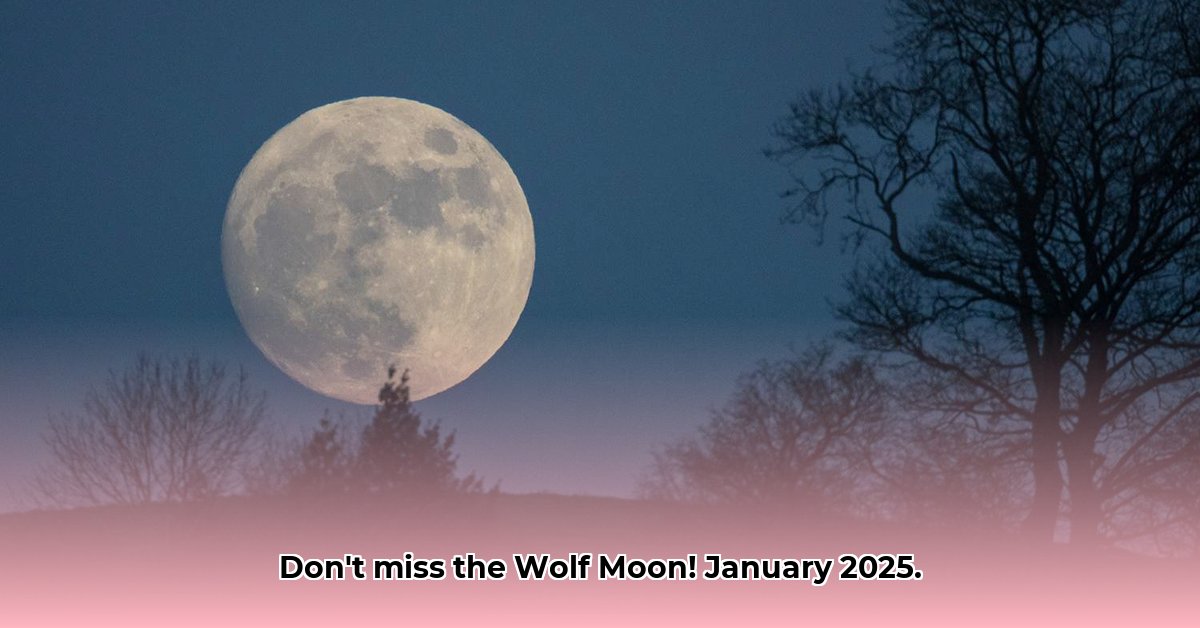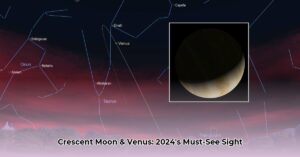Dive into the captivating details of the 2025 Wolf Moon, from its peak viewing time to the rich folklore surrounding its name. This guide provides everything you need to witness and appreciate this celestial event.
When and Where to Witness the Wolf Moon
The 2025 Wolf Moon reached its peak brilliance at precisely 5:27 p.m. Eastern Time (ET) on Monday, January 13th, 2025 (that’s 22:27 Coordinated Universal Time). While this marked the moment of its fullest phase, the moon appeared nearly full for roughly three days, spanning from the evening of Sunday, January 12th, to the morning of Wednesday, January 15th.
This celestial spectacle was visible from virtually anywhere on Earth with clear skies. Locating the Wolf Moon is easy—simply look up! However, for the most breathtaking view, consider finding a spot away from the glare of city lights. Darker skies allow the moon’s radiance to truly shine, revealing a more dramatic and memorable lunar experience.
To determine the precise moonrise and moonset times for your specific location, consult online resources like the Old Farmer’s Almanac (https://www.almanac.com/astronomy/moonrise-and-moonset). By entering your zip code, you’ll receive personalized viewing times, making your Wolf Moon watching even more convenient. For those outside the U.S., a quick online search for “[your location] moonrise/moonset times” will yield similar results. Many weather apps and websites also provide this specific lunar information.
Decoding the Name: Why “Wolf Moon”?
The name “Wolf Moon,” steeped in folklore, likely originates from Native American traditions. It’s believed that the name arose from the increased howling of wolf packs during the cold and snowy depths of midwinter. Imagine the scene: a frigid January night, the landscape blanketed in snow, the silence punctuated by the echoing howls of wolves under the bright moonlight. This powerful imagery likely cemented the connection between the January full moon and the wolf in the minds of early observers.
However, the precise reason for the wolves’ increased vocalizations during this time remains a topic of ongoing research. Some scientists suggest that wolves, like many nocturnal animals, may simply be more active under the increased light of the full moon, making hunting more successful. Other theories propose that the howls are related to territorial marking or mating behaviors, potentially amplified during the harsher winter months.
It’s also important to note that different cultures have assigned various names to the January full moon. These names often reflect the unique environmental conditions and cultural perspectives of each region. For example, some cultures refer to it as the Ice Moon, the Snow Moon, or the Cold Moon, all descriptive terms capturing the essence of winter’s grip.
Tips for an Enhanced Viewing Experience
While no special equipment is necessary to witness the Wolf Moon’s splendor, binoculars or a telescope can significantly enhance your viewing experience. They’ll unveil intricate details of the lunar surface, from craters and mountains to valleys and plains, transforming your moon gazing into a virtual lunar expedition.
Here are some additional tips for maximizing your enjoyment:
- Embrace the Darkness: Seek out locations far from city lights to minimize light pollution.
- Time it Right: Plan your viewing around moonrise or moonset for a dramatic perspective. The moon often appears larger near the horizon due to an optical illusion.
- Check the Forecast: Clear skies are essential for optimal viewing. Consult weather forecasts before heading out.
- Dress Warmly: January nights can be chilly. Bundle up in layers to stay comfortable during your lunar observation.
- Be Patient: Allow your eyes time to adapt to the darkness. The longer you look, the more details you’ll perceive.
- Capture the Moment: If you’re interested in astrophotography, a DSLR camera with a telephoto lens and a tripod will yield the best results. A remote shutter release also minimizes vibrations for sharper images.
The Wolf Moon’s Symbolic Significance
Beyond its scientific and historical aspects, the Wolf Moon holds symbolic meaning for many. It’s often seen as a time of renewal, introspection, and confronting one’s “shadow self.” Like a natural new year’s ritual, the Wolf Moon can inspire reflection on the past year and the setting of intentions for the future. This symbolism aligns with the quietude of winter, a period of dormancy in nature that encourages inward focus and preparation for the renewal of spring.
While the precise interpretations may vary across different cultures and belief systems, the Wolf Moon serves as a powerful reminder of our connection to the cosmos and the cyclical nature of time.
Beyond 2025: Future Wolf Moons
The Wolf Moon returns every January, continuing the yearly cycle of celestial wonders. Keep these tips in mind, and you’ll be well-equipped to appreciate the beauty of this lunar event year after year. As our scientific understanding and cultural appreciation of the moon evolve, perhaps future discoveries will reveal even more about the mysteries and stories held within this captivating celestial body.







